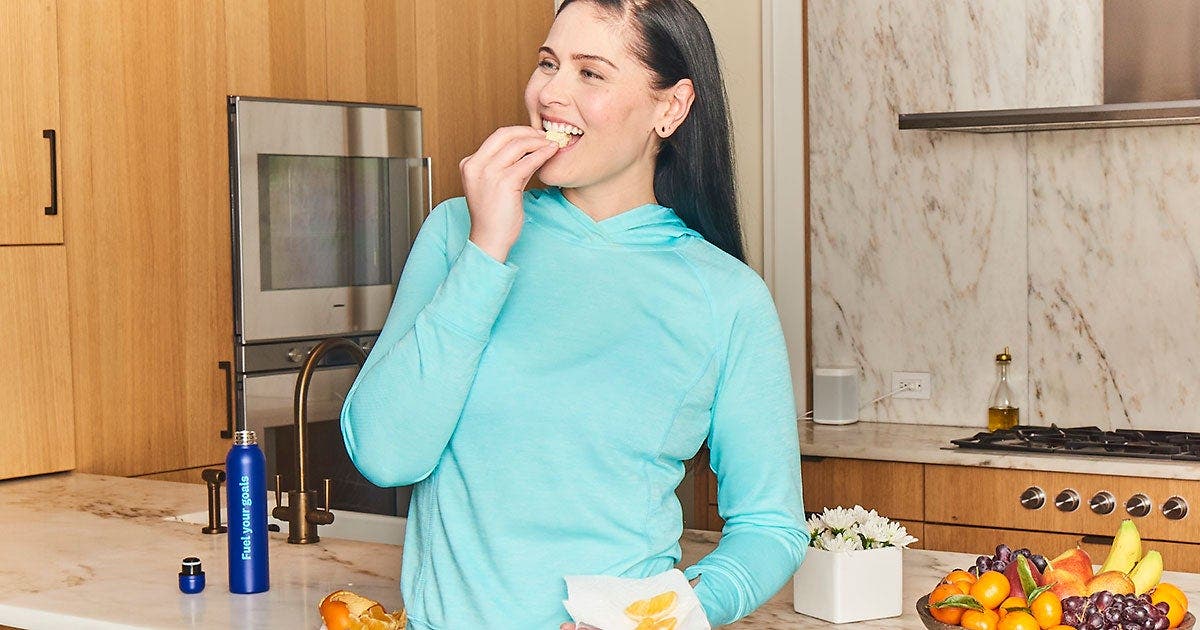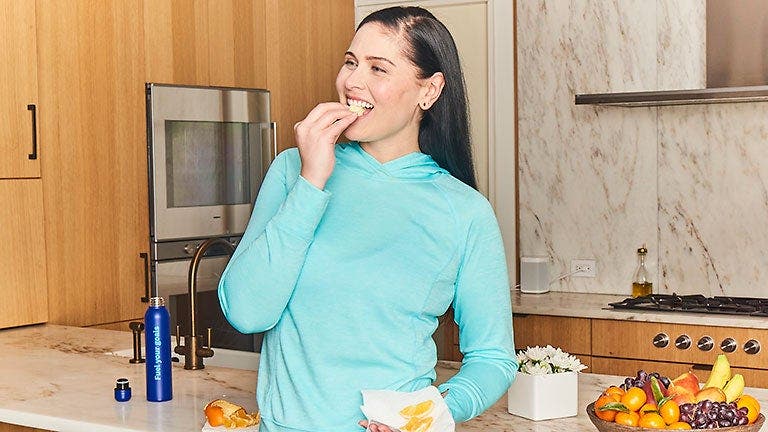Can Exercise Make you Hungry?


Hunger and exercise can oftentimes get too chummy, #amiright? You start a new fitness class, or training for a 5K, or lifting weights and you suddenly feel like eating everything in sight. Not exactly welcome when you're trying to lose weight.
Can exercise make you hungry, or is it all in your head?
The Hunger-Exercise Connection
First, there is truth to the mind-belly connection: After exercising your body may urge you to make up any calorie-burn deficit with food simply because you burn energy during activity. And if you’ve done strength-training, that may increase your hunger even more because it burns more calories. So, unless muscle is fed the right fuel, it could increase your appetite on its own.
But don’t fear the fork—having enough energy is important for our bodies: “The fact is that if we measure basal metabolic rate the rate of energy expenditure, or calorie burn, at rest, those who exercise regularly will generally burn more overall energy than a sedentary person and have lower body fat,” says Liz Applegate, PhD, director of sports nutrition at University of California, Davis.
“What’s important to remember,” Applegate adds, “is that being physically active on a regular basis is an integral part of our food intake mechanism: The body is designed to have a high flux in energy. Meaning, more calories in, more calories out.” As an example, she explains, our bodies are better at regulating 2,220 calories in plus calories out, rather than only 1,200 calories in (like when you’re on a restricted diet) and few out. “Instead, exercise is ultimately most beneficial because you preserve lean mass, and possibly build lean mass, and preferentially use fat for energy,” Applegate says.
RELATED: What to Eat Before Your Charity Walk
Can Your Workout Curb Your Appetite?
Some research shows that exercise actually suppresses hunger. What gives? Studies suggest exercise can temporarily blunt appetite, “especially exercise that generates a lot of body heat,” Applegate says. “The rise in body temperature is what creates that hunger-curbing effect.”
Another explanation is that exercise may create a cascade in your biochemistry : According to Jamie A. Cooper, PhD, associate professor of nutrition at University of Georgia, a spike in the peptide (small amino acid molecule) called PYY, aka peptide tyrosine tyrosine, plays a major role for temporary satiety, or the feeling of fullness, post-workout.
Three separate studies with a small number of participants; teenage girls with obesity, men in good health, and men with obesity —revealed that intense exercise can diminish appetite immediately and up to 24 hours after. It does so in a few ways: by increasing peptides that help regulate hunger; by reducing the “hunger hormone” ghrelin; or by peaking growth hormone.
Or maybe the feeling of hunger is only in your head? Research in the journal Metabolism: Clinical and Experimental found that in three groups of men, those who exercised had lower measured levels of the hunger hormone ghrelin post-exercise. Yet, they reported feeling more hungry than the sedentary group. The post-exercise groups ate just as much as the non-exercising group; but because they’d exercised, their calorie output was higher overall for the day.
Eating Tips for Exercise-Induced Hunger
“It's important to know how many calories you’re burning,” Cooper says. Treadmill estimates and fitness watches aren’t always accurate. “People generally don't have a good sense of how much they’ve burned, so to get a better idea, look up your activity type, duration, and intensity, then look up what that equates to it foodwise,” she says, and you’ll be able to gauge how much to eat more accurately.
What and when you eat matters, too. Applegate says: “Do a morning workout of up to 60 minutes so you get it out of the way; and don’t eat beforehand. After your workout, eat a 300- to 400-calorie meal that includes 15-20 grams of protein and what I call ‘rustic’ carbs—or unrefined carbohydrates, such as steel cut oats, sprouted grain bread, or leafy greens.”
If you are planning to enjoy a post-workout snack or meal, plan ahead. Packing something portable could help if you are out running errands afterward.
“You have to take charge,” Applegate adds “Play around with workout time and eating; and mix it up. Do HIIT one day, steady-state the next; mix up the muscle groups you’re training; do a group class once a week. And don’t avoid exercise because you’ll think you’ll be hungrier. Instead, reboot your body to be a better calorie burner. It’s not a one size fits all, but you can do it.”
RELATED: How Exercise Burns Fat
